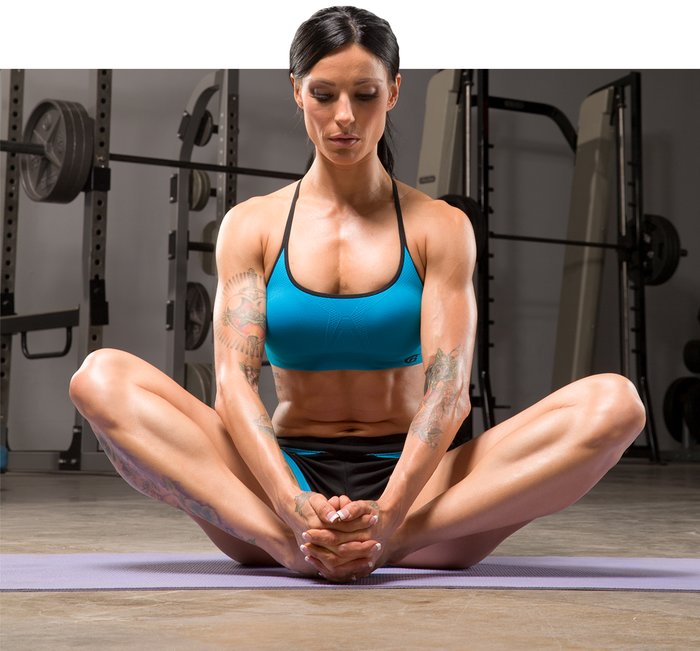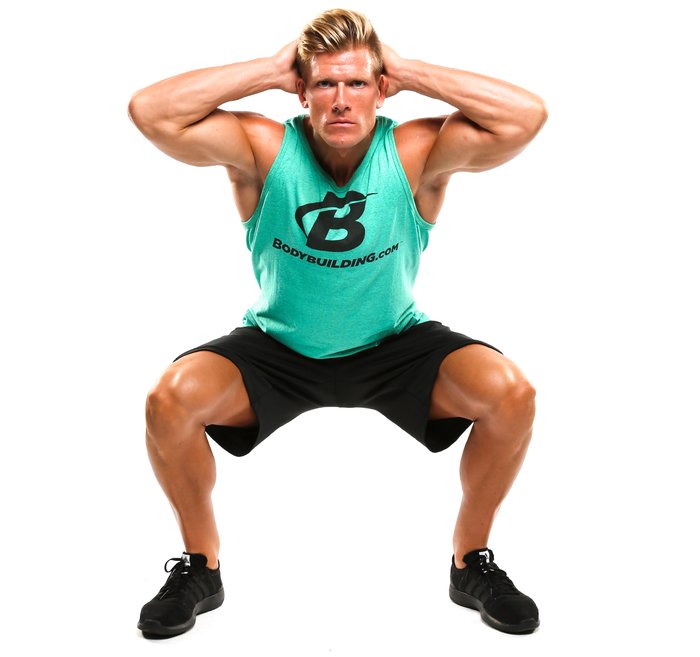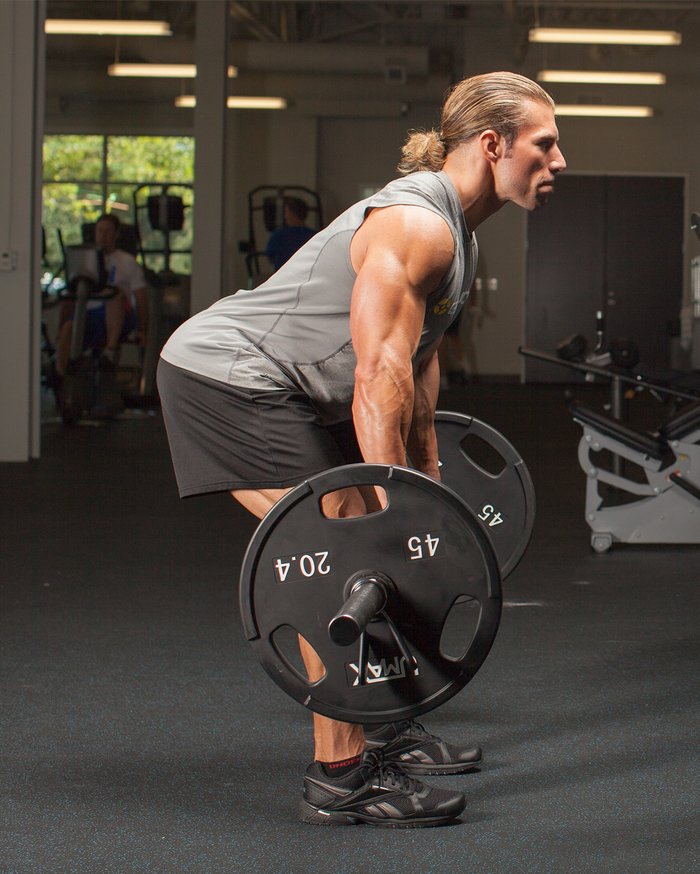Once upon a time, stretching was king. Everybody did it before they trained hard—or even went for a walk—and it was the defining part of a cool-down. Nowadays, "mobility" rules the land, and every coach, Instagram celeb, and fitness personality seems like they have just the move to "unlock" what's binding your body before lifting.
Stretching? That's for the old guard—after all, there was that study where it made people weaker before they lifted.[1] But should stretching be cast on the slagheap of fitness history? No. It just needs to be done right, and best of all, it can be done by seamlessly integrating it with the training you're doing now.
Here's how to build flexibility you can use before, during, and after your workout.
Pre-Workout Stretching: Embrace the Flow
This is one place where the new guard has it right. The best way to enhance mobility and flexibility before training isn't by punishing your hammies or shoulders with traditional, static stretching. Instead, think like a yogi during this point in the workout and focus on alignment and quality movement.

Why yoga? Yoga enhances flexibility and range of motion through a series of poses, where you "flow" from one position to the next. Done correctly, some muscles get stretched, others get activated, and your whole body ends up warmer and more agile than it was just a few minutes earlier.
But if you're the type of lifter who rolls your eyes at yoga, then just think of it as "dynamic stretching" instead. Whatever you call it, it works. A 2012 review published in the International Journal of Sports Physical Therapy concluded that dynamic stretching enhances muscular performance more than static stretching.[2]
If you're at a loss, focus on these two priorities:
- Move joints steadily through a full range of motion, including both big ones like the shoulders and hips, and small ones like the wrists and ankles. Simple circles can get a lot done here!
- Activate the same muscle groups you plan to target during your lifting routine.
For instance, on leg days, your dynamic stretching routine might include things like:

Then, on upper-body days, consider things like:
- Arm circles
- Push-ups with a thoracic rotation at the top
- Bear crawls
- Bodyweight rows
- Dive bomb push-ups (and just about any other kind of push-up)
Wondering about sets and reps? Keep it fluid and intuitive. Aim for sets of 10 or 30 seconds, but keep it relatively easy. The goal, as the great bodybuilder Lee Haney said, is to stimulate, not annihilate.
Intra-Workout: Use Eccentrics to Your Advantage
You can enhance your flexibility throughout your standard workout routine—as long as you know what you're doing. According to Rachel Straub, CSCS, a strength coach and co-author of the book "Weight Training Without Injury," it's just a matter of focusing on an often neglected part of a rep: the lowering or eccentric half.
"Simply performing chest flyes on a flat bench as opposed to a vertical chest fly machine uses gravity to provide a deeper range of motion for your shoulders," she says. "Likewise, performing standing calf raises where you allow the heels to drop below the toes helps provide calf stretching."
Tight hammies? Romanian deadlifts can help actively stretch them over time, while also strengthening them. Tight chest and shoulders? Feel that deep stretch during dumbbell bench presses, or do push-ups between boxes. Hips locked up? Deep squat variations like goblet squats can be your best friend.

In fact, when strength exercises are selected with intention it's possible to use your strength-training routine as your stretching routine, at least to a point. Of course, technique is key in this type of training, so it's likely worth your time to get personalized guidance from a strength coach, mobility specialist, or physical therapist.
"There are endless ways to strengthen and stretch any given muscle, but knowing what exercises actually stretch and strengthen together is something that takes time to learn and master," Straub says.
This type of dynamic mid-workout stretching helps explain why some lifters have such phenomenal flexibility. Just don't force your working muscles to move past their point of comfort, particularly when carrying a load. The stretch reflex, when a muscle involuntarily contracts when stretched too far, helps you avoid injured. But only if you choose your loads carefully.
Post-Workout or Later: Strategic Stretching
Even though static stretching may not be ideal before each strength-training session, there's still a place for it in your training. Adding static stretches to the end of your routine or on rest days can help you develop a fuller range of motion, especially when you hold each stretch for at least 30 seconds. Plus, it just feels really good.
You don't need to stretch every muscle this way. Instead, just focus on a few chronically tight areas like the hip flexors, glutes, and thoracic spine. Try these static stretches for those area, recommended by Nike Master Trainer Jason Raynor:
Supine Figure 4 Hip Stretch: Lie on your back with your knees bent and your feet flat on the ground. Cross your right leg over your left thigh, placing your right ankle just above your left knee, forming a number 4 shape. Lift your left foot from the ground, and reach forward, clasping your hands behind your left thigh. Slowly and steadily draw your left thigh closer to your torso, keeping your right knee open, pointing to the right. When you feel a good stretch, hold the position for at least 20 seconds. Release the stretch and repeat twice more before switching legs.
Kneeling Hip Flexor Stretch: Kneel on the floor with your right knee positioned directly underneath your right hip. Place your left foot in front of you, planted on the ground, as if you were down on one knee proposing to someone. Place your hands on your hips and, keeping your torso upright and tall, slowly press your hips forward until you feel a stretch along the front of your right hip. Hold for 10 seconds, release for a second, then repeat five more times before switching sides.
Supine Thoracic Rotation: Lie on your right side with your legs extended. Place a yoga block (or rolled up mat, or foam roller) about a foot in front of your body and lined up with your hips. Bend your left knee and draw it up, placing your knee on top of the block so your hip and knee are each bent at 90-degree angles. Reach your arms straight out in front of your chest so your right arm is in contact with the ground, your left hand resting on top of your right. This is the starting position.
Keeping your lower body and right arm fixed, slowly lift your left arm, arcing it over and across your torso, opening up your chest as you move your left hand toward the ground on the opposite side. Hold this stretch for five deep breaths, then reverse the movement. Momentarily, bring your left hand back to rest on top of your right hand, then, while keeping your lower body and right arm fixed, stretch your left hand forward past your right hand as far as you can.
Return to the starting position and repeat the thoracic rotation again. Complete 6-10 of these rotations before switching sides.
Pre-Workout or Anytime: Use Balls, Rollers, and Mobility Devices
Flexibility and mobility training doesn't stop at stretching, whether static or dynamic.
"Targeted soft-tissue work, including foam rollers, balls, hyperspheres, and sticks, help prep muscle-tissue elasticity and realign fascial lines of force," Raynor says.
He suggests doing soft-tissue work before you start your dynamic stretching routine, as well as on rest days. If you do it regularly you can avoid fascial adhesions or "knots," maintain muscle elasticity and pliability, and have increased access to joint range of motion before you train—all attributes that every lifter should aim for.
References
- Simic, L., Sarabon, N., & Markovic, G. (2013). Does pre‐exercise static stretching inhibit maximal muscular performance? A meta‐analytical review. Scandinavian Journal of Medicine & Science in Sports, 23(2), 131-148.
- Page, P. (2012). Current concepts in muscle stretching for exercise and rehabilitation. International Journal of Sports Physical Therapy, 7(1), 109.

